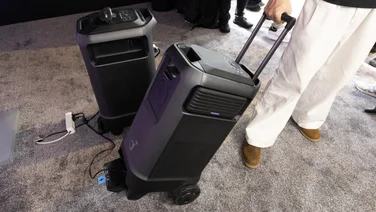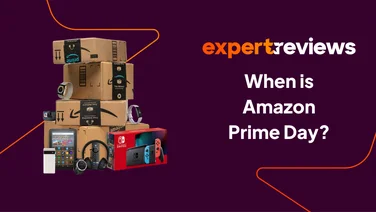To help us provide you with free impartial advice, we may earn a commission if you buy through links on our site. Learn more

Google Glass has officially been trumped. Last night, Microsoft announced HoloLens, a brand-new pair of smart glasses that can create pseudo-holograms using Windows 10. While Microsoft is keen to call it the world’s first holographic computing platform, HoloLens is essentially a very fancy form of augmented reality, as you still need the glasses to see the three-dimensional models.
Alex Kipman demoed the glasses live on stage at Microsoft’s Windows 10 presentation. The untethered headset is rather large, but it doesn’t require any wires, phones or a connection to a PC in order to work. It also has see-through high-definition lenses and spatial sound so you can view and hear the so-called ‘holograms’ around you, even when they’re behind you, and advanced sensors to detect where you are in relation to your surrounding environment. .

It’s powered by what Microsoft calls a next-generation built-in high-end CPU and GPU. However, Microsoft said it needed a third ‘holographic’ processor as well in order for the device to truly understand the world around us, so it created the Holographic Processing Unit (HPU), which can understand what you’re doing, where you’re looking, your gestures, your voice and the ability to spatially map the world around us. It can also supposedly process terabytes of data in real-time, all without wires and external cameras.
Everything you need to know about Windows 10
Kipman also said that every Windows 10 device will have APIs which are focused on human and environment understanding, so holographic APIs will be enabled inside every Windows 10 build. ‘Holograms’ are universal apps in Windows 10, so all other universal apps will be able to work with Windows Holographic as well, such as Netflix, Minecraft, Skype and the Windows Store. This means you’ll be able to bring 3D models of the app, such as a make-shift TV screen for Netflix or iPlayer into the physical space around you and interact with it using glances, gestures and voice commands.

In the demo, we saw someone create a quad-copter using the Holo Studio app, which lets you create your own objects and then 3D-print them once you’re finished. However, another camera rig had to be present so the audience could see through the eyes of the HoloLens, further confirming that this is actually taking place in augmented reality rather than an actual hologram that everyone can see in the flesh.
Microsoft’s promo video for the HoloLens also hinted that other non-HoloLens-wearing users would be able to interact with what other people see through their glasses by using a tablet or PC, such as being able to talk someone through replacing a sink trap pipe over Skype by circling where to tighten certain coupling nuts on their tablet. These instructions are then brought up on the HoloLens display so you can see exactly what they’re referring to.

Microsoft didn’t give an exact release date for the HoloLens in its presentation, but it said will launch during “the Windows 10 time frame” (although this could potentially mean at any time at all if Microsoft is going to be continually updating Windows 10 rather than releasing bigger, more traditional operating system updates as they said last night).






